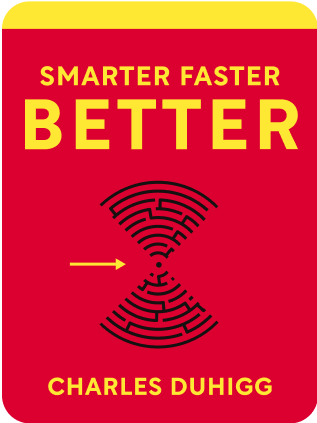

This article is an excerpt from the Shortform book guide to "Smarter Faster Better" by Charles Duhigg. Shortform has the world's best summaries and analyses of books you should be reading.
Like this article? Sign up for a free trial here .
How good are you at setting effective goals? Do you know how to set SMART goals?
In Smarter Faster Better, Charles Duhigg discusses how setting effective goals contributes to productivity. He outlines the elements and benefits of SMART goals. He also provides interesting examples from history to illustrate how setting effective goals can make a difference.
Read on to learn about setting effective goals—particularly how to set SMART goals.
Setting Effective Goals Is the Key to Productivity
How can setting effective goals help you stay focused and boost your productivity?
Having the right goals is crucial in maintaining productivity for a number of reasons. Firstly, to be productive, you need to know exactly what you’re striving towards. Secondly, you need to be sure that you’re aiming for the right results. Finally, whether or not you meet your goals is often used as a measure of how productive you are. That measure will be inaccurate if your goals were flawed from the start.
SMART goals are smaller, more focused objectives. They are often the smaller steps you’ll need to take to fulfill an ambitious goal (a stretch goal).
SMART goals follow certain criteria. They must be:
- Specific: You must outline a targeted objective, not a vague aspiration.
- Measurable: You must be able to measure the goal’s success.
- Achievable and Realistic: You must actually have the time, resources, and capabilities to complete this goal; doing so has to be possible.
- Timely: You must have an expected timeline for accomplishing the goal.
These goals often have a much smaller scope than stretch goals. For the stretch goal of writing a book, a SMART goal might be writing one chapter, or even one section of a chapter.
Once you know how to set SMART goals, you’ll reap certain benefits. Because SMART goals are by design detailed and have been extensively thought through, the path to achieving them is often very clear. This can have a motivating effect. It’s easier to motivate yourself to work towards a goal when you have a clear plan to follow.
Likewise, by forcing you to set a timeline for the completion of your goal, SMART goals can encourage discipline. You can no longer procrastinate your task: you’ve got a deadline to meet.
Example: The Typist Experiment
In 1975, two psychologists conducted a study on how setting effective goals could boost productivity. For their experiment, they recruited 45 typists from a large corporation. These typists were already considered very productive; on average, their output was 95 typewritten lines per hour. Each typist was given the goal of increasing their output by a certain number of lines per hour.
The psychologists made sure that the typists’ goals were SMART. They were intent on setting effective goals. Each typist received a specific output level to aim for that was realistic and achievable based on their capabilities and situation. They were given a timeline of when they should achieve this increased output, and they were shown how to measure their hourly output so that they could measure their progress towards the goal.
Within a week of starting the experiment, the typists’ average output rate had increased to 103 lines per hour. After another week, the average rose again to 112 lines per hour. When the researchers checked on the typists in three months, they were all still typing at their new faster rate. In fact, some were typing even faster than before. Having a SMART goal had boosted the typists’ productivity to unprecedented levels.
Example: The Yom Kippur War
In 1972, Eli Zeira was appointed head of Israel’s Directorate of Military Intelligence, a body with the responsibility of updating the Israeli people on the likelihood of war with their old adversaries, Egypt and Syria. When he was appointed, Zeira two had clear goals:
- He wanted to reduce the Israeli people’s anxiety over the possibility of war.
- He wanted to prevent the alarm from being raised unless there was a definite threat of war. In the past, the Directorate had raised the alarm needlessly, causing unnecessary anxiety.
Zeira introduced a new formula to assess the likelihood of war, known as “the concept.” He theorized that Egypt and Syria wouldn’t attack again until they had long-range missiles and stronger air forces. They had lacked these capabilities in the last war—unlike Israel—and had been defeated. He was sure they wouldn’t risk the same fate again.
Zeira also enforced a new mindset in the Directorate which prioritized efficiency and decisiveness. Once a risk estimate was made, everyone was committed to it. Dissenting views weren’t tolerated, and rigidity of thought was encouraged.
Zeira’s Lack of Flexibility Puts Israelis in Danger
In early October 1973, worrying signs suggested war was coming. Egypt and Syria were increasing military activity at their borders with Israel. Likewise, the Soviets had evacuated all of their advisers from Syria and Egypt, suggesting imminent danger.
Despite these signs, Zeira was adamant that war was not likely since neither Syria nor Egypt had met the criteria of “the concept.” He felt that there was no need to raise the alert or begin to prepare for a war that would not come. The Israeli Prime Minister and her other senior military personnel heeded Zeira’s advice.
On the morning of October 6th, the Israelis gained credible intelligence stating that the Egyptians would invade later that day. They could no longer deny that war was imminent and finally began to prepare. However, they had left it too late to be fully ready for the invasion. It was hard to mobilize the army and the reserves effectively in such a short time frame. The fact that it was Yom Kippur, a religious holiday, made the process even slower.
When Egypt and Syria invaded, Israel was unprepared and struggled to respond effectively. While the Israelis eventually staved off the invasion, it was a close call. Thousands of Israelis lost their lives or were injured.
Zeira and his colleagues had become overly focused on their original goals of reducing Israeli anxiety and only raising the alert when necessary. They hadn’t been willing to re-examine and amend their goals, even when evidence suggested that they were no longer appropriate. They should have adopted a new goal: keeping the Israeli people safe. Their refusal to do so had devastating consequences.
Productive people are skilled at setting effective goals. They know how to set SMART goals and see them through to achieve results.

———End of Preview———
Like what you just read? Read the rest of the world's best book summary and analysis of Charles Duhigg's "Smarter Faster Better" at Shortform .
Here's what you'll find in our full Smarter Faster Better summary :
- Why becoming more productive isn’t about working longer hours or constantly pushing yourself to do more
- The 8 principles for improving productivity
- How to create a work culture in which each employee is truly valued






